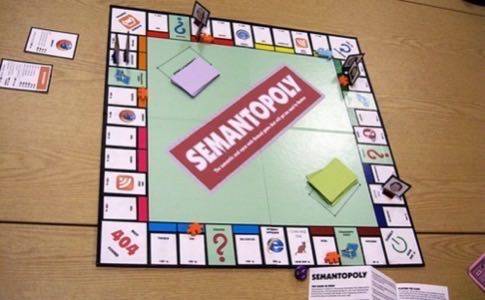This week we reported that Cognition had announced “the largest commercially available Semantic Map of the English language.” In our interview with Cognition CEO Scott Janus, we asked him to compare Cognition’s technologies to those of other semantic search companies Hakia and Powerset. Janus pointed to their large Semantic Map as the main differentiator. Indeed he told us that semantic search companies “must include a comprehensive semantic map” to be successful.

Is this true? We sought a response from both Hakia and Microsoft-owned Powerset on this semantically charged question.
Cognition claims that its Semantic Map has over 10 million semantic connections, including “over 4 million semantic contexts (word meanings that create contexts for specific meanings of other related words)”.
Hakia CEO Riza C. Berkan responded in the comments to the original article that “hakia is deploying Ontological Semantics (OntoSem)”, which he described as “a network of concepts reflecting ontology.” He went on to say that hakia covers “over [a] million words in English”.

However Berkan noted that the size of a Semantic Map does not necessarily matter: “the sheer size of the collection of words or concepts does not represent, by any means, the capability of the system.” Hakia’s position is that “there is no silver bullet for a semantic solution that will succeed”, as long as the system developed is scalable and imposes “minimum reliance on ‘words'”.
Semantopoly: Advance token to nearest Semantic Context

At this point we were still confused. Cognition uses the term “semantic map” and said it was necessary to have. One of the commenters on the original post agreed with that assumption. Yet Hakia’s Riza Berkan didn’t use the term “semantic map”. So we asked Hakia in a follow-up email, does it or does it not have a semantic map? Dr. Christian Hempelmann, Hakia’s Chief Scientific Officer, responded:
“The term sometimes comes up in the context of data integration, but “Semantic map” is not a term used in linguistics. I can only speculate that it is what is commonly called an ontology. To the degree that they let us on about it in the documentation on their website, Cognition operates with only 2 main relations, much like WordNet: hyperonymy/hyponymy (e.g. cat is-a feline is-a mammal; their “taxonomy”) and synonymy (e.g., “buy” means almost the same as “purchase”; their “thesaurus”). Furthermore, this map is not independent of English, cannot grow into other languages. hakia, on the other hand, has an ontology with many more relations, effectively raising our “semantic map” to the size of a higher power, and can and is already growing into other languages.”
We also tried to get a comment from Powerset, but as of writing we haven’t received it.
So, are we all clearer now on what is a Semantic Map, is it needed, and does size matter? Er, it depends. If you think you know the answers, tell us in the comments please!

















